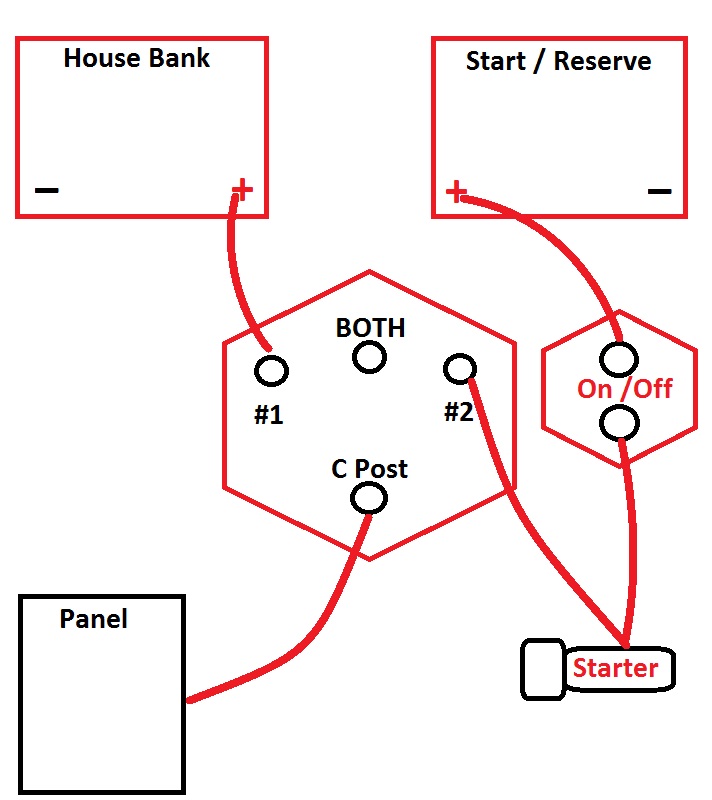For Scott
For instance, I never indicated that I think it IS a good idea to set the switch on Combined for any reason other than to start the engine when one of the banks is in a discharged condition.
Scott, but that is exactly why I think it is not a good idea. The issue is simple: it is rarely the reserve bank that is discharged, it is the house bank, 'cuz that's the one you're using. The reserve bank, as Maine Sail and I and many others have been explaining for years, is almost always full. So, if your small reserve bank is connected to a large discharged house bank, the small reserve bank is going to discharge into the dead bank, leaving you with NOTHING. That is why it is not a good idea. Maine Sail described a situation just like that recently:
http://forums.catalina.sailboatowners.com/showthread.php?p=848465&highlight=darn agm
This is a perfect example of what I mean by
limited house loads.
As far as I can tell, when I turn the DCP switch On, it is no different than when you turn your switch to 1. If I ever turned my switch to Combined, it is no different than your switch if you turned it to B.
I agree. And I keep saying that the ONLY time one should use B
is when charging sources are present. With a functioning echo charger, ACR, etc., you shouldn't ever have to use B, except for backup in case of ACR failure.
I understand that you can use 2 independently from 1, and I also understand that you may be saying that there is NEVER any circumstance where you turn your switch to B.
And that is a great advantage. You can use the reserve bank for LIMITED house loads, which the DCP simply can't do. And B, when charging sources are present, can be used to combine the banks if the ACR fails.
I am saying that I can only think of one reason to turn my switch to Combined and that would be for an emergency start. It seems to me that to say that is a no-no is a little nit-picky since the B position on your switch does the same thing and MS says that it is a common occurance, even with the 1-2-B switch.
No so, as far as I'm concerned. It's NOT nit-picky, it's a reality of operational use. If people don't know how to use their switches, they might consider wanting to learn more. The DCP can never be used as an "either-or" switch; they're either separated or combined. That is the biggest drawback, as Maine Sail's "Darn AGM" topic discusses in great detail. And I believe that this thread by Maine Sail discusses that the B position of the switch is (almost) never ever used.
I still feel the way I do about the DCP, but have also written that if you understand how a DCP works, you'll understand it's limitations. Many folks, for instance, like it because it separates the two banks and avoids potential electrical drop outs when starting the engine. Since both Maine Sail and I have posted the alternate switch diagrams to avoid this issue, we're saying there is more than one way to skin a cat.
The cat I would not like to see around is the one described in the link to Maine Sail's "Darn AGMs and DCP Switch" post. His client got zapped big time. Why put yourself or anyone else in that position?
That's all I'm sayin...

And I did a "Maine Sail-like" discussion about this here:
http://c34.org/bbs/index.php/topic,6604.0.html


